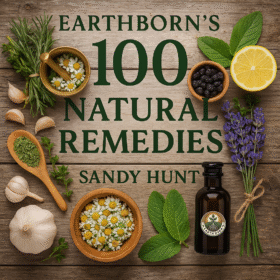-
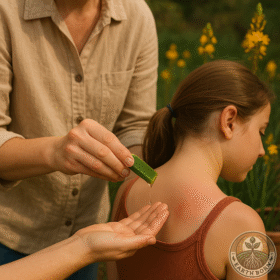
🌱 Bulbine Grower’s Guide (Bulbine frutescens)
🌱 Introduction and historyBulbine frutescens, commonly known as Stalked Bulbine or Snake Flower, is a hardy perennial succulent native to South Africa. A proud member of the Asphodelaceae family, it thrives in the veld and has long been valued for both its ornamental charm and powerful healing properties. Traditionally, it has been called the “living bandage” by communities who relied on its soothing gel for everyday wounds. 💊 Medicinal BenefitsBulbine is packed with anti-inflammatory, antibacterial, and antifungal compounds, particularly acetylated anthraquinones and chrysophanol. The fresh leaf gel is widely used to treat burns, cuts, rashes, insect bites, eczema, and sunburn.…
-
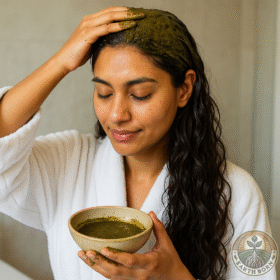
🌿 3 Natural Remedies Using Henna (Lawsonia inermis)
🍃 How to Harvest and Store Henna Leaves ✅ Harvesting: Pick mature leaves in late summer or early autumn when the dye and active compounds are at their peak. Use clean garden shears or gently hand-pick healthy leaves from the upper branches. Avoid damaged, yellowed, or insect-infested leaves. ✅ Drying: Spread leaves in a single layer on a clean cloth or mesh screen in a warm, shaded, well-ventilated spot. Dry completely over 5–7 days until crisp and crumbly. ✅ Storage: Store dried leaves whole or powdered in an airtight glass jar. Keep in a cool, dark cupboard to maintain potency…
-
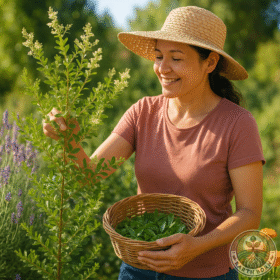
🌱Henna (Lawsonia inermis)
🌱 Introduction and history Henna (Lawsonia inermis) is a flowering perennial shrub treasured for millennia across North Africa, South Asia, and the Middle East. Known as Mehndi, Egyptian Privet, and Mignonette Tree, Henna’s leaves have been used to dye skin, hair, and textiles since ancient times. Archaeological evidence shows its application in ancient Egyptian mummification rituals over 5,000 years ago. Today, Henna remains a powerful cultural symbol of beauty, celebration, and healing. 💊 Medicinal Benefits Henna leaves contain Lawsone (2-hydroxy-1,4-naphthoquinone), a natural pigment with antifungal, antibacterial, and anti-inflammatory properties. Traditionally, powdered Henna paste is applied to soothe skin irritations, minor… Read more…
-

🌱Black Cumin (Nigella sativa)
Black cumin, scientifically known as Nigella sativa, is a flowering annual herb in the buttercup family (Ranunculaceae). Originating in the Mediterranean, North Africa, and parts of Asia, its tiny jet-black seeds have been revered for centuries in Unani, Ayurvedic, and Islamic medicine—earning the nickname “the seed of blessing.” This humble herb is both ornamental and highly medicinal, making it a treasured addition to traditional gardens. 💊 Medicinal BenefitsBlack cumin seeds are packed with therapeutic compounds like thymoquinone, known for powerful antioxidant, anti-inflammatory, antibacterial, and immune-modulating properties. Traditionally, they’ve been used to treat digestive disorders, respiratory ailments, and skin conditions, and… Read more…
-

🌿 Yucca (Yucca spp.)The Hardy Healer for Your Garden 🌿
The Yucca (Yucca spp.) is more than just a striking addition to your landscape—this resilient perennial, native to Southern Africa (including South Africa, Namibia, and Botswana), is packed with medicinal benefits and thrives in tough conditions. Whether you’re looking to add a bold, architectural plant to your garden or tap into its healing properties, Yucca is an excellent choice! 💊 Medicinal Benefits of Yucca Yucca is valued for its powerful anti-inflammatory, antioxidant, and immune-boosting properties, making it a popular natural remedy. Its active compounds, including saponins, flavonoids, and phenolic acids, are known to: ✔️ Ease arthritis and joint pain (often… Read more…
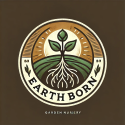

 **Meet Sprout!** Sprout is your friendly gardening companion at Earthborn, always ready with helpful advice on plant care, medicinal herbs, and natural gardening solutions. From seedling to harvest, Sprout provides expert guidance to nurture your garden and your well-being—making gardening easy, fun, and naturally rewarding.
**Meet Sprout!** Sprout is your friendly gardening companion at Earthborn, always ready with helpful advice on plant care, medicinal herbs, and natural gardening solutions. From seedling to harvest, Sprout provides expert guidance to nurture your garden and your well-being—making gardening easy, fun, and naturally rewarding.
